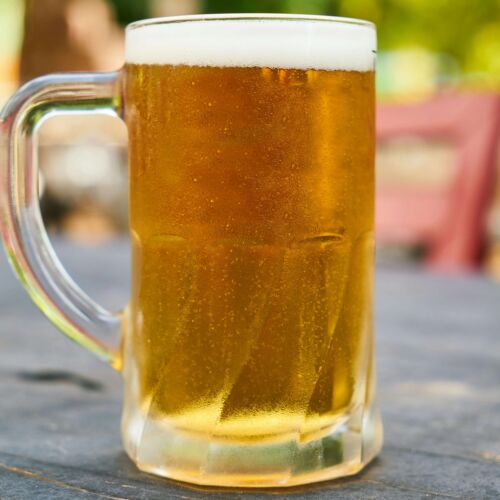7+ Best Hiking Snacks (According to Dietitians)!
by Elsa Wong

Snack Ideas for Hiking
When it comes to what to bring on a hike you have your core list of essentials. Extra clothes, bear spray, proper footwear, bug spray, sunscreen, water, and snacks! But what are the best hiking snacks to bring?
There are some considerations to keep in mind to ensure you bring the best snacks for hiking:
- How intense and long is the hike going to be?
- Plan to snack or stop for a picnic meal
- Food safety
- Sufficient hydration
- Snack ideas
How intense and long is the hike going to be?
The length and intensity of your hike is going to give you an idea of what type of energy your body is going to be using.
For low-intensity hikes, we use more fats as the primary energy source, while higher-intensity hikes burn more carbohydrates as the main fuel source.
Therefore, higher fat and protein snacks are best for low-intensity hikes, while carbohydrate-rich snacks are best for high-intensity hikes.
Lastly, the length of your hike is going to determine how many snacks you should bring on your hike.
Snack Idea:
Snacks high in fat and/or protein such as nuts and seeds are perfect for low-intensity hikes, for both short 1-4-hour hikes and long hikes greater than 4-hour.

Snack Idea:
Carbohydrate-rich snacks such as muffins and dried fruits are perfect for high-intensity hikes such as heavily inclined trails or if you are trail running.

Snacking vs. Picnic Meal
When it comes to hiking snacks it is important to have them throughout the hike to help refuel as you go. This way it gives your body extra energy to finish your hike. Alternatively, stopping for a lengthier break with a picnic meal can work, but some may find that a larger meal may make you feel more sluggish as you resume your hike. This is because blood would rush to your stomach to help digest your food, which will result in less blood flow to your exercising muscles to continue hiking.
Picnics and sit-down meals are perfect for shorter hikes to enjoy your company and the amazing mountain views while snacking and grazing are best suited for longer hikes.

Food Safety
Food safety is often forgotten but is still important to ensure that you don’t get sick from the snacks that are packed.
When it comes to bacterial growth on food there are two things to look out for: time and temperature.
The longer the hike, the longer the time for bacterial growth. The best way to slow down food contamination is to keep cold foods cold and hot foods hot.
Packing perishable snacks in insulated containers with ice packs can help maintain cold temperatures and food safety.
Another way to maintain food safety is by packing non-perishable snacks, so bacteria cannot grow on these foods.
Hydration
To keep well hydrated, try to drink according to a schedule based on either time or distance, i.e., sip every 10-15 minutes or sip every km. Aim for about 500 ml for every hour of exertion.
Most will prefer a refreshing lime or lemon flavour rather than sweet tasting options.
If you think you are a salty sweater then the addition of electrolytes can help replenish the minerals that you lose with sweat, as well as helps retain more water in your body.
Homemade sport drinks, or electrolyte supplements (e.g., NUUN tablets) are easy ways to add essential minerals to your fluids.
If you are looking for “energy” from your beverage then you can use a standard sports drink, such as Gatorade, eLoads, Skratch Labs, etc.
Best Hiking Snack Ideas
Muffins and Granola Bars
↑Protein ↑Carbohydrates ✓Low and High-intensity hike ✓Easy to Graze ✓Non-perishable
Blueberry and banana muffins are high in carbohydrates. Adding some nuts and seeds to your muffin it can increase your protein and fat.

Trail Mix
↑Protein ↑Fats ✓Low-intensity hike ✓Easy to Graze ✓Non-perishable
This hiking staple is perfect a snack for low-intensity hikes, that are high in protein and fat, and easy to graze throughout your hike.
Energy Balls
(oats, nut butter, dried fruit)
↑Protein ↑Fats ✓Low-intensity hike ✓Easy to Graze X Non-perishable
These little nuggets of joy are perfect for a low-intensity hike providing high amounts of protein and fat to keep your energy throughout your hike.
Protein Bars, Cheese, Nuts
↑Protein ↑Fats ✓Low-intensity hike ✓Easy to Graze ✓Non-perishable
Quick and easy to pack; perfect for a last-minute planned hike, perfect for snacking on throughout the day.
Dried Fruit
↑Carbohydrates ✓High-intensity hike ✓Easy to Graze ✓Non-perishable
Whether it be dried mango, apples, and bananas this hiking snack has high amounts of carbohydrates that will help you refuel your body during a high-intensity trail run hike.
Hopefully, you found some hiking snack ideas for your next hike!
Authors: Elsa Wong, Dietitian, and Kelly Anne Erdman, MSc, RD, CSSD.



